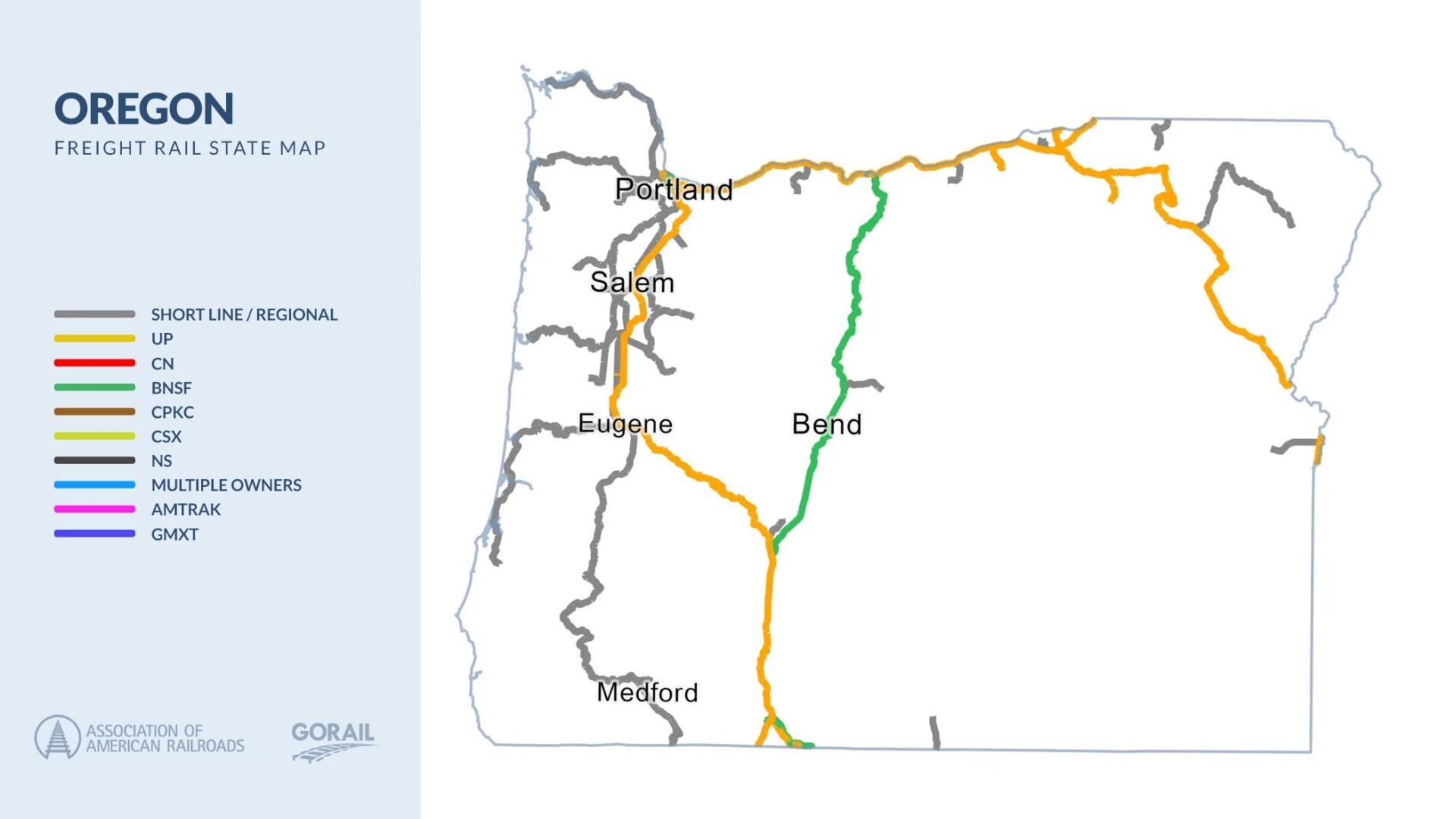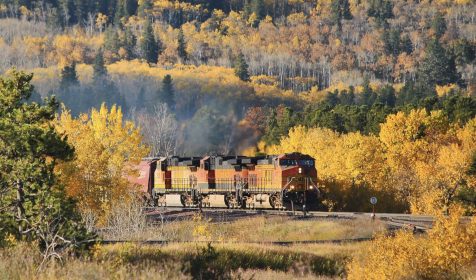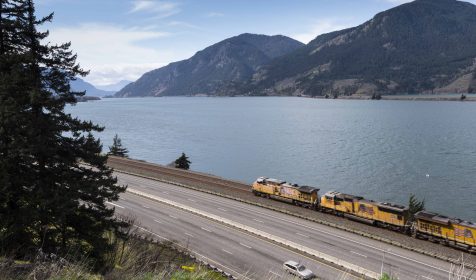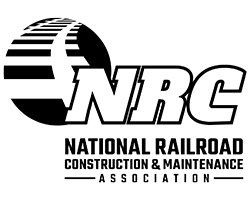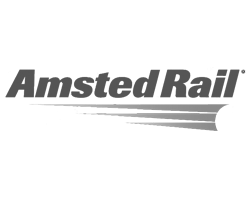Freight Rail Facilitates Green Economy in the Beaver State
With about one-third of Oregon’s economy based on goods movement, it is easy to see that freight transportation choices make a big difference to the average Oregonian’s quality of life. Freight rail improves connections for Beaver State businesses, manufacturers and agriculture while also relieving roadway congestion, saving fuel and emitting fewer pollutants.
Oregon’s 21 freight railroads operate over 2,307 miles of track and employ 1,328 in the Beaver State.* It would have taken approximately 630,000 additional truckloads to move the 11.3 million tons of freight that moved by rail in Oregon in 2021. Moving freight by rail prevented 2.47 million tons of greenhouse gas emissions, the equivalent of taking 485,000 cars off the road or planting 37.5 million trees. Intermodal shipments and lumber and wood products make up the majority of freight rail shipments beginning in Oregon. Intermodal shipments and chemicals are the largest rail imports to the state.
*2023 data


